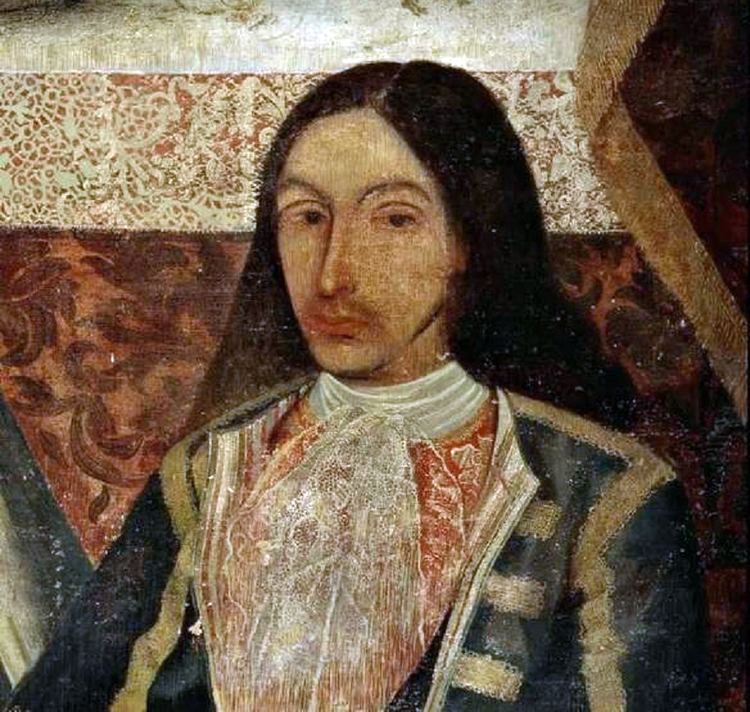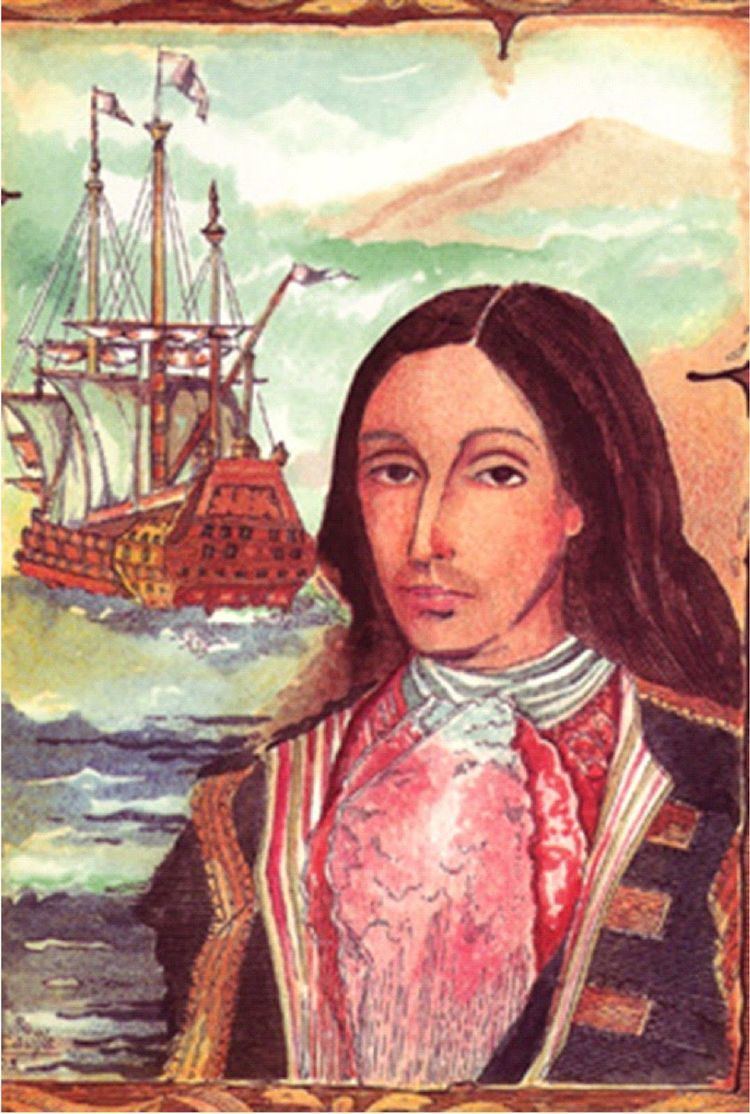Nickname Amaro Pargo Base of operations Atlantic | Rank Captain Name Amaro Felipe | |
 | ||
Born 3 May 1678 (or 1695 according to other sources) San Cristobal de La Laguna, Tenerife, Spain Died 14 October 1747 (69 years)San Cristobal de La Laguna Similar José Gaspar, Alonso de Contreras, Cabeza de Perro | ||
Amaro Pargo, su casa.
Amaro Rodriguez Felipe y Tejera Machado (3 May 1678 or 1695, in San Cristobal de La Laguna – 14 October 1747, in San Cristobal de La Laguna), more popularly known as Amaro Pargo, was a famous Spanish pirate. He was one of the most famous pirates of the golden age of piracy, and one of the most important personalities of the 18th century of Spain.
Contents
Early life

Born in San Cristobal de La Laguna, on the island of Tenerife (Canary Islands) on 3 May, 1678 (although other sources show his birth on the same day, but in the year 1695). Despite this, the first date is accepted as the more likely one.
He was baptized by the priest Manuel Hurtado Mendoza in the Iglesia de Los Remedios (Church of Our Lady of Los Remedios; currently a cathedral in the city). His godfather was Amaro Lopez. He was the son of Juan Rodriguez Felipe and Beatriz Tejera Machado. He had seven brothers.
In 1701, he boarded as second lieutenant on a ship, the Ave Maria, nicknamed "La Chata" ("The Barge"), which was boarded by pirates. He advised the captain to feign surrender in order to start a battle from which they emerged victorious. In gratitude, the captain would give Amaro his first boat. With it he began his business activities, including participation in the African slave trade in Latin America.
Trader and privateer
He conducted his affairs with a well-nourished fleet and also with many residences. Moreover, because of his beliefs as a fervent Catholic, he was responsible for important works of charity for churches, religious institutions, and the Parroquia de Nuestra Senora de Los Remedios (Parish Church of Our Lady of Los Remedios), now the Catedral de San Cristobal de La Laguna (La Laguna Cathedral). He received a letter of marque from the King of Spain. He began a deep friendship with the nun Sister Mary of Jesus and became romantically involved with the Cuban Josefa Maria del Valdespino, with whom he had an illegitimate son, but did not come to marry. This son was named Manuel de la Trinidad Amaro. On January 25, 1725, he acceded to the nobility by being declared a hidalgo in Madrid. He founded a chaplaincy for the needy and allocated 3,000 reales for the poor in the prisons.
He used to take his own ships to America loaded with Malmsey wine from his own crops in Geneto, Tegueste and Valle Colino, and brandy from his distilleries with boilers which he had in his houses in El Agua street and La Miravala, in the localities of La Laguna and El Socorro (Tegueste), respectively, and used to sell these goods in Havana and Guyana. On his way he would attack any English and Dutch ships he encountered, bringing the booty back to Spain. Amaro Pargo fought against some of the most notorious pirates of his period, among them Blackbeard.
Pargo even came to be the richest man of the Canary Islands. Amaro Pargo was a character who in his day had the same reputation and popularity that Blackbeard and Francis Drake.
Death
Amaro died October 14, 1747 in his hometown. He was buried in the Santo Domingo de Guzman Convent in La Laguna. On his death, his estate was substantial, and his natural son Manuel appeared in La Laguna demanding his part, but the rest of Pargo's heirs objected. Because of his relentless fight for the interests of the Spanish Crown against enemy powers, Amaro Pargo was considered a national hero in his time.
Treasury of Amaro Pargo
Pargo wrote in his will that has a box he kept in his cabin. This carved chest containing silver, gold jewelry, pearls and precious stones of great value, chinese porcelain, rich fabrics and paintings, adding that it had listed in a book wrapped in parchment and marked with the letter "D". This book their whereabouts are unknown.
In the long centuries of the popular mind has tried to clarify the place where a treasure is above. The house of Amaro Pargo in Machado (in the municipality of El Rosario) was sacked over the years by treasure hunters. It has also been speculated that the treasure is in the so-called Cave of San Mateo in Punta del Hidalgo northeast of Tenerife, cave that served to hide their loot.
Despite all these efforts, this treasure has not yet been located.
Exhumation
On 16 November 2013, the exhumation was carried out by a team of archaeologists and forensic scientists from the Autonomous University of Madrid, to carry out a study on the pirate, including DNA tests and the recreation of his face.
According to historic records, Pargo was buried alongside his parents and a black servant. It was discovered, however, that apart from these, there were six more people, as well as some incomplete remains of babies. It is believed that some of these people were nephews or great nephews of Amaro Pargo, although it is known that the babies were not related to the privateer. The fact that they are buried together with the corsair is possibly due to a custom that took root all over Spain and the Canary islands to bury unbaptized children next to an adult, in the belief that the adult would guide them to Heaven.
The exhumation was funded by the French video game company, Ubisoft, for the fourth instalment of the saga titled "Assassin's Creed IV: Black Flag". According to a supervisor of the company that financed the exhumation, Pargo was "a character who in his time had the same reputation and popularity as Blackbeard or Francis Drake".
